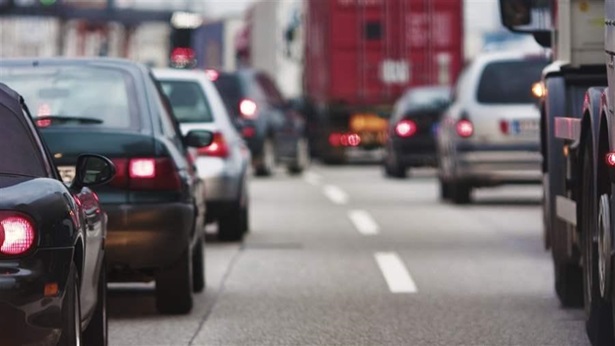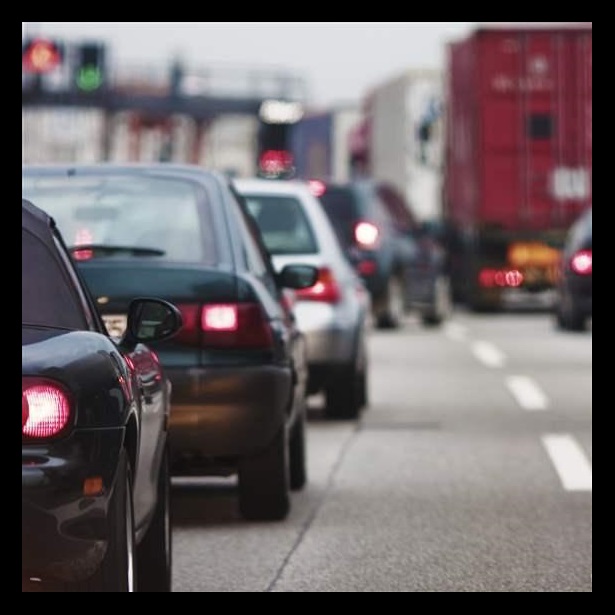Drivers Licenses for Unauthorized Immigrants Experts Discuss State Experiences
Pew hosts ‘Deciding Who Drives’ event
On Oct. 15, 2015, experts from California, Delaware, and Nevada came to Washington to discuss their varied experiences designing and implementing laws that allow unauthorized immigrants to obtain alternative driver’s licenses.
California and Nevada offer alternative licenses to unauthorized immigrants; California began issuing them in January 2015 and Nevada in January 2014. Delaware was scheduled to begin issuing the licenses in December 2015. California has the largest population of unauthorized immigrants in the nation and estimates that 1.4 million people will be eligible to receive alternative licenses. Delaware projects 20,000, and Nevada falls in between with 60,000 eligible individuals.
The speakers engaged in a rich discussion, from which Pew drew four key takeaways that can inform policy decisions in states considering similar legislation.
Legislators should engage their issuing agencies to begin planning for implementation early in the legislative process
As lawmakers consider which provisions to include in their driver’s license laws, they should reach out to officials at the issuing agencies, typically the motor vehicles department, revenue department, or another agency, depending on the state. This communication can help legislators gain a critical understanding of the agencies’ processes—antifraud measures, data storage, information sharing, compliance with the federal REAL ID Act (which allows states to issue licenses to unauthorized immigrants if those licenses are distinctive and clearly state they may not be used for official federal purposes)—and how the proposed legislation might affect them. These issues are likely to arise during legislative debates, and bill authors may benefit from knowing how proposed provisions relate to and may change practices.
Erika Contreras, chief of staff to Senator Ricardo Lara, a key sponsor of California’s driver’s license law, said: "Once the legislature and the author decided that they were going to move forward with a marked card, one of the priorities remained ensuring that the state strike a balance between meeting the Real ID requirements and not putting this population at risk for deportation or discrimination … There was definitely a lot of thought and work put into the legislation.” By working together, lawmakers and the Department of Motor Vehicles were able to design a distinctive alternative driver’s license for unauthorized immigrants that balanced the various needs.
According to Terri Albertson, interim director of the Nevada Department of Motor Vehicles, officials from that state’s DMV met with lawmakers after the bill was introduced in the Legislature and were able to provide guidance on a variety of issues. "Because we were Real ID-compliant at the time, we knew what we had to do in order to remain Real ID-compliant,” Albertson stated. This collaboration ensured that the law was informed with insights from the DMV.
Stakeholders can provide information and resources throughout design and implementation
Identifying and partnering with stakeholders, such as law enforcement, community groups, and foreign consulates, at various stages of planning and implementation can allow the state to learn about the target community and to share information about the new licenses with eligible applicants. Before introducing alternative license legislation, Delaware convened a task force that brought together state legislators, DMV officials, and representatives from local community organizations, law enforcement agencies, insurance companies, and businesses. The task force, created through a Senate resolution in 2014, met six times and produced a report that recommended moving forward with the legislation and provided guidance that shaped the language of the law. According to Scott Vien, director of the Division of Motor Vehicles in the Delaware Department of Transportation, the task force “helped [the state] put forward a bill that was to the benefit of everyone.”
All three speakers reported that working with foreign consulates was critical to identifying which foreign-issued documents could be accepted and to reaching out to immigrant communities. California DMV officials found that partnering with law enforcement was helpful. “During the presentations and workshops with the DMV, usually there was law enforcement sitting next to the DMV representative saying, ‘Don't be afraid. Come out. We want you to get a driver's license. We want you to get insurance. Everybody will be safer.’ I think that really helped,” Contreras said.
States should be flexible and prepared to make adjustments
Even if planning starts early and states engage with multiple stakeholders, unexpected situations can still arise, and states must be ready and nimble enough to respond to these events. In Nevada, the DMV did not create an appointment system and did not anticipate the large number of applicants that arrived on the first days the alternative licenses were available. Further, according to Albertson, some applicants were unprepared for the written and driving exams, and as a result, failure rates were high. “It wasn't just a matter of coming in and paying the fee and filling out an application,” she said. In response, the DMV conducted additional community outreach to inform prospective applicants about the requirements. In California, emergency regulations were needed to accommodate individuals who had previously held driver’s licenses and wanted to reapply under the new legislation, an issue that had not been addressed in the legislation.
Policymakers are learning from the experiences of other states
State lawmakers and other officials can use lessons from other states to inform how they plan, design, and implement their driver’s license laws. The speakers from California, Delaware, and Nevada reported that they had reached out to leaders in other states for insight on issues ranging from card design to fingerprinting procedures. Vien said Delaware’s provision requiring unauthorized immigrants to present proof that they had filed state taxes for the previous two years when applying for a license was based on a similar regulation in Maryland designed to prevent nonstate residents from obtaining the alternative license. As it has moved forward with implementation, Delaware has also learned from the experiences of California, Connecticut, Utah, and Vermont.
When designing their state’s law, DMV officials in Nevada looked to Utah, which has issued licenses for several years. The name of Nevada’s alternative license and its document translation process came out of these conversations. Then, in turn, Nevada reached out and provided advice to California. “There was a group of us that went to the California DMV and said, ‘Here, learn from us,’" Albertson said.
Conclusion
Insights from California, Delaware, and Nevada confirm that state legislators and issuing agency officials are reaching out to each other, to their counterparts in other states, and to stakeholders as they design and implement new driver’s license laws. As more states consider similar legislation in 2016, the community of policymakers who have experience designing and implementing these laws is growing and presenting new opportunities to exchange information, best practices, and lessons learned. By engaging with one another, states can ensure that the design and implementation of alternative licenses is customized to fit the unique needs of their communities.
Endnotes
- Alternative license” refers to the distinctive license issued to unauthorized immigrants and others who are not eligible for or choose not to get a regular driver’s license. Under the provisions of the federal REAL ID Act, these licenses are not acceptable as identification for certain official federal purposes. Some states use other names for the licenses, such as driving privilege cards or driver authorization cards.













